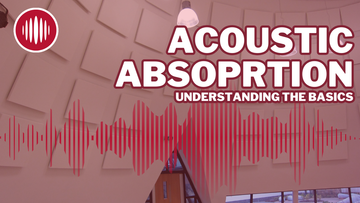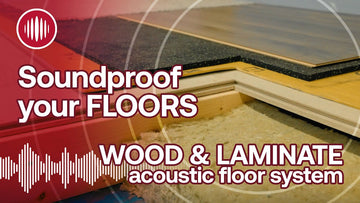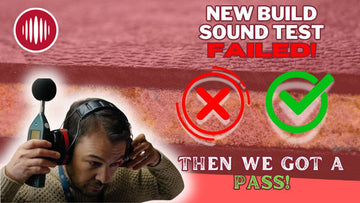Reverberation – The Problem
Reverberation of sound in buildings is a common problem, particularly with modern interior design leaning towards hard, clean, surfaces such as wooden floors, large areas of glass and plastered walls and ceilings.
Reverberation by definition is prolongation of sound, this is created by the sound resonating or rebounding of surfaces to continue the noise for longer. Hard surfaces allow the sound to reflect and ‘bounce’ around the room creating nuisance, unwanted, extended noise.
The reverberating noise creates spaces that are uncomfortable to be in, first because they are loud and noisy, but also making it extremely difficult to concentrate. Studies show increased reverberation time leads to significantly reduced word recognition and an increase in listening effort required.
Reverberation causes issues in common, public areas for the obvious reason of increased attendance and have more people in one space, however it is also due these spaces and rooms requiring larger volume of area, often having high ceilings and creating longer pathways and vaster areas for the sound to reflect around. These spaces are also often designed with hard flat surfaces which are easy to clean due to heavy traffic.
Reverberation time is how long it takes from a sound being created until it fades away. The choice of materials used to construct the interior of that room and the overall volume of the room (length x width x height) will determine the reverberation time of the space. In fact the reverberation time of a space can be calculated even before the space is built using this information.
Absorption – The Solution
How can we reduce reverberation in a room? How can we stop sound echoing around a space? The solution to solving the problem of reverberation is introducing absorption material into the room.
Products that absorb sound are generally soft finishes that are exposed within the space. For example curtains and carpet will reduce reverberation time and absorb sound that is being reflected around a room.

The most effective solution is installing acoustic absorption panels into the space and most importantly installing them into the areas that they are most required.
Absorption panels come in many different materials, thicknesses and levels of performance to suit the requirement of the reverb issue, the aesthetic of the space and being sympathetic to the design and also other demands of the client, regulations or designer.
Absorption panels can be foam, wood, mineral wool, recycled PET plastics and many other materials. Our most common solution is to install our Class A foam panels across the ceiling and wall areas.

The Process – How do I solve the issue of my reverberant space?
If you have a noise issue in your building, space or room we can offer a free of charge specification and quotation for supply and installation of absorption panels for your space.

- Make contact with our technical team and let us know the issue.
- We will visit site and measure the space and survey the surface materials. This can also be done remotely if images and dimension are provided.
- We will provide a reverberation time calculation, showing the existing reverb time on a graph across the frequency range and an improved reverb time based upon installation of the absorption panels. A before and after.
- We will provide a drawing showing the position of the panels and work out the best location for performance as well as working with the requirements of the space.
- We will provide a quotation based upon the calculation for supply and installation of the absorption panels.






